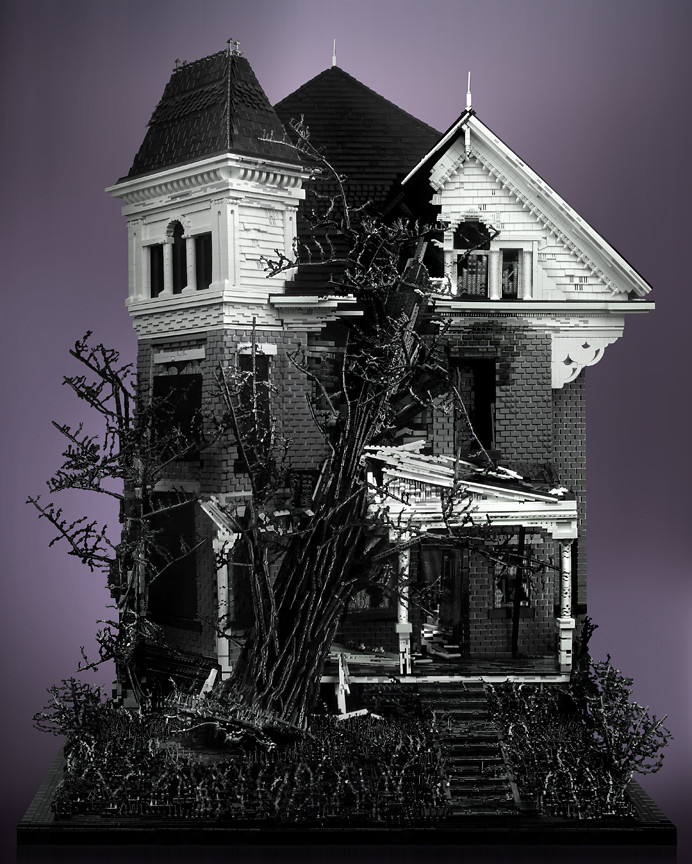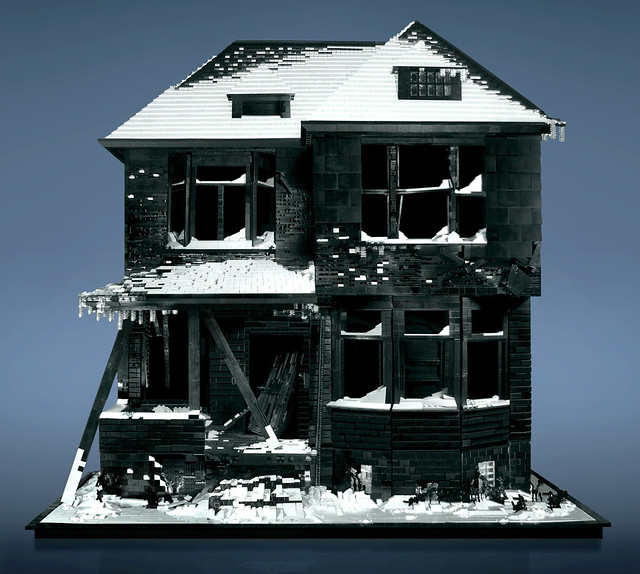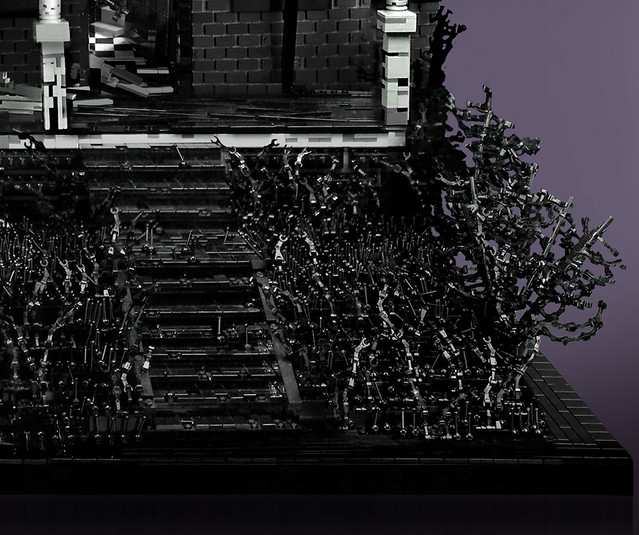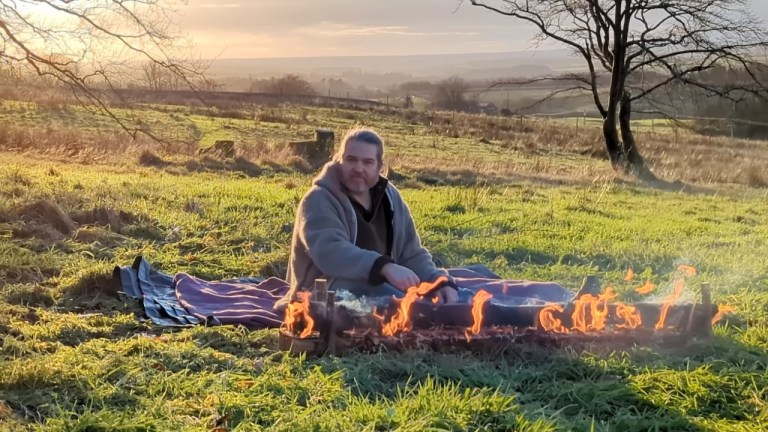Spooky Abandoned Victorian Houses Made from LEGO Bricks
110k – 130k pieces
Black, white, dark and light bluish gray, clear trans and black trans colors used.
No foreign materials (wood, glue, paint or otherwise) were used – this is pure Lego. No Lego piece have been altered (painted, cut or otherwise).
Photo retouching used only for adding contrast and color correction & background.
Approx 600 hours to build
Three Story Victorian with Tree
50k – 60k pieces
Black, white, dark and bluish gray, clear trans and black trans colors used.
No foreign materials (wood, glue, paint or otherwise) were used – this is pure Lego.
Photo retouching used only for adding contrast and color correction & background.
Approx 450 hours to build
In his series Abandoned Houses, artist Mike Doyle created three spooky abandoned Victorian houses out of LEGO bricks: the TwoStory with Basement, the Three Story Victorian with Tree and his latest, Lego: Victorian on Mud Heap. His blog contains quite a bit of information and photos on how he made each of these fantastic pieces.
High-resolution prints of all three houses are available individually at Bumble & Bramble. Each print is signed, numbered and comes with a LEGO of the now dismantled pieces.
Many ask me how I go about planning and building these pieces. Sadly, I tend to be a ‘messy’ planner, so I do not make any blueprints or basic construction drawings. Rather I just get to work. I start by researching photos I find online. Generally, I find a house feel I would like to recreate. I also look for others that have specific moments of deterioration that I find interesting. In this case, I also researched houses that have been smashed by fallen trees. Next, I take a look at other moc’s to see if there are any special techniques I can use based on the subject matter.
Now for the size. I look on the buildings for objects that I would like to recreate with a piece. In this case, the scale was determined by the size of the bricks. One real life brick is almost the same size as a 1 x 2 tile – the 1 x 2 tile being a little bigger, but not by much. From here, I count out the bricks on the building to determine width and height and use rudimentary measuring tools, like a pencil or thumb held up to gauge relative proportions between the real thing and my work. In this way, I can make sure all is on track. I’ve tried plotting everything out on paper and using measurements, but inevitably I mess up somewhere along the line with the numbers and then have to start over again. Thus, I tend to just ‘wing it’.
via The Brothers Brick, Make and Colossal
photos by Mike Doyle











